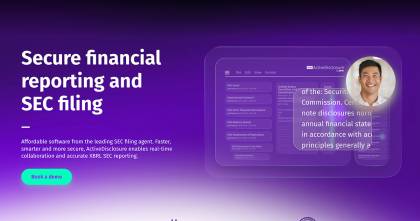In 2022, the SEC adopted new rules for proxy votes, which changed the process used for shareholder votes in contested board elections at publicly traded companies. Notably, both companies and any dissident groups soliciting proxies for director nominees and slates are now required to provide voters with a universal proxy card that lists all candidates for election to the board in the same place, no matter who (management or dissident) is promoting the candidates.
The new rules also established new notice and filing requirements for all soliciting parties, as well as formatting and presentation requirements for universal proxy cards. In addition, the final rules require shareholders presenting their own director candidates in the contest to solicit holders of a minimum of 67% of the voting power of shares entitled to vote in the election.
Registered investment companies and business development companies are not subject to the universal proxy rules. Publicly traded companies, while subject to these rules that are already in effect, can still strategically revise their proxy statements and take other actions to align with their goals for board elections. Read on for more.
What Is Universal Proxy Voting?
To better understand what universal proxy voting is, it’s helpful to review how proxy voting previously worked. Most investors do not attend meetings in-person and instead vote by proxy. In these circumstances, they are not actually voting, but rather appointing a proxy (from either the company or the dissident soliciting party) who will be at the meeting and cast the actual vote.
Before universal proxy voting, shareholders essentially voted for an entire slate (i.e., “the white card” or “the blue card”). This system had no provision that allowed a shareholder to split their vote or pick and choose among candidates from different slates. (As an aside, some savvy institutional and other investors were able to do so, usually by a) attending the meeting, and b) signing ballots from each proxy committee clearly indicating their intent. Sometimes, even those efforts were frustrated.)
The system wasn’t built for “pick and choose”; it was “winner take all”. Voters were required to choose one of two slates: candidates proposed by other shareholders, or candidates proposed by management. By contrast, shareholders who attended in person could select candidates from either slate, picking and choosing individuals from either slate as they saw fit — if they returned both ballots and the inspectors of the election actually followed their intent.
A universal proxy card allows shareholders of all types, and voting through all channels, to select their preferred candidates by doing away with the two-slate system of the past. They can either a) support one slate over the other, or b) pick and choose among the candidates. Now, all candidates are presented on a single slate so that voters can choose their preferred candidates. This change was first proposed by the SEC in 2016. However, the changes were not adopted until 2022. The universal proxy card process applies to any elections held after August 2022.
While making the switch to universal voting slates, the SEC set down additional universal proxy card rules regarding the formatting and presentation of information. This change ensures consistency, so all cards display the same information in the same way.
The SEC also set a regulation for candidates nominated by shareholders themselves, requiring that the dissident party solicit the holders of at least 67% of total shares. The SEC also required a disclosure statement that explains all the voting options to be included on the voting card.
How Does Universal Proxy Voting Affect Director Elections?
If all shareholders can now mix and match candidates from different proxy cards, what is the impact on director elections? Broadly speaking, this new rule levels the playing field for shareholder-proposed candidates. Shareholders are no longer limited from voting for one side or the other; they can choose from either side.
Some analysts have suggested this could also increase the number of board elections that are contested, as it may be more likely that one or two dissident candidates might be approved by shareholders, as opposed to their full slate. They likely will perceive the new system as making it easier to gain representation even if they can’t gain control of the board.
What Your Company Can Do Now to Prepare for Your Next Board Election
History has shown that very few companies are immune to potential activism and even board election proxy contests. For this reason, companies are preparing now with strategies that act:
- As a shield, to show potential dissidents that “we a strong board” and to present strong messaging about the board, to dissuade activists from selecting them as a target
- As a spear, to stand up to dissident messaging should they receive a competing set of board candidates.
Preparing for universal proxy voting with openness and transparency helps shareholders better understand the new system, as well as what’s at stake. Strong communication starts proactively. Companies should communicate about the universal proxy rule changes before the election season.
Under universal proxy, with shareholders evaluating director nominees and not just slates, they will likely still consider the traditional focus on strong character, accomplishment and perspectives. But they will also be asking themselves, “What does candidate X uniquely bring to the board?” And dissident soliciting parties — absent any other knowledge of management board nominee quality, engagement and contribution to the board — may target the oldest, longest tenured and/or least diverse management nominees, who may be among the company’s strongest directors.
In response, companies can prepare by highlighting each of their nominees’ unique competencies and potential contributions to the board, as well as the overall mix of board experience and skills. So, “qualifications” may be recast as “top competencies x brings to our board that are relevant for our strategies.” To add emphasis, this information can be positioned above, not below, the longer biographical narrative of each nominee. This positioning may seem subtle, but it’s in effect asking and answering the question that shareholders will be asking themselves if faced with a contested election (i.e., a true “choice”). Companies also can get ahead of dissident-led discussions by providing transparent financial information and board diversity data to shareholders before the election.
This has implications for the following interrelated set of proxy disclosures:
- Director nominee bios
- Board skills matrices
- Risk, ESG, sustainability and other oversight discussions
- Board committees, their areas of oversight and composition
- Ongoing board refreshment – adding new directors for refreshment, diversity AND to acquire or augment board competencies
DFIN’s Guide to Effective Proxies, 12th edition, has sections focusing on effective disclosures in each of these areas. In addition to that key tool, we offer complimentary proxy evaluations and suggestions to our clients, participating in several hundred of these each year – arranged through your DFIN sales or account manager.
Challenges and Criticisms of Universal Proxy Voting
Critics of the switch have three main complaints:
- The voting process is more complex: While the old process had flaws, it was straightforward. Shareholders chose one slate or the other. Less experienced shareholders may not fully grasp what's at stake in their vote. This confusion could complicate corporate governance. For example, if the board candidates who win the vote have competing priorities, effective governance will be challenging.
- Increased likelihood of challenges: Critics worry that activist shareholders will feel empowered to challenge the current strategy, which may lead to more proxy fights.
- Universal proxy voting costs more: More contested elections will translate to higher costs for the company that must manage the fight and avoid negative reputational consequences.
Shareholder Rights and Influence
There have been widespread predictions about how shareholder influence may change under the new rule. While it seems too early to tell, a few outcomes of the change include:
- Increased shareholder control over the board makeup: Previously, current board leadership was somewhat protected from replacement due to the necessity to select one side or the other in a proxy contest. Now, this built-in hedge against replacement of individual members can no longer be assumed. Increased shareholder control over the makeup of the board may leave previous leadership more vulnerable to replacement during an election.
- Increased influence over the course of direction: For an activist shareholder to influence the course of direction under the old way of doing things, they needed to rally a great number of people to their side. Now, some analysts believe they may exert more leverage over the course of direction with less effort.
- Increased shareholder engagement: Shareholders may be more likely to increase their engagement with the board of directors when they believe they have more power and responsibility. This may lead shareholders to take on more of an active role in advocating for a specific policy or governance change they believe is in the company's best interest.
Preparing for Universal Proxy Voting
The new universal proxy rules for director elections are already in effect. Companies prepared for their next board election are better positioned to handle the change. While challenges may arise because of the new rule, ultimately, the SEC universal proxy change has the potential to enhance corporate governance.
DFIN offers proxy statement solutions designed to make the election process easier and more transparent. For help preparing universal proxy cards in advance of your next board election, contact our experts.

